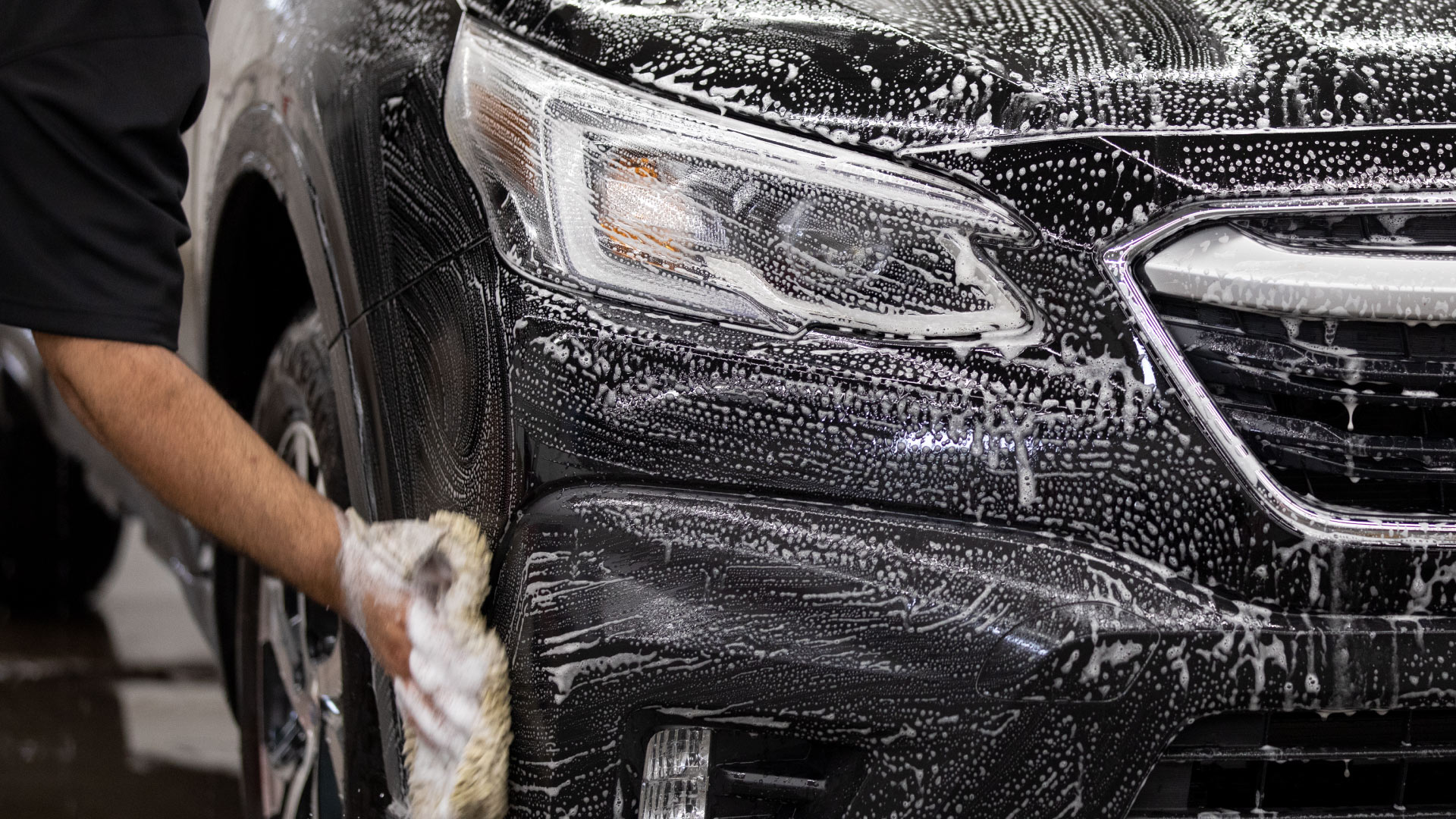How Dry Ice Cleaning In Round Rock Delivers a Spotless Car Without the Mess
How Dry Ice Cleaning In Round Rock Delivers a Spotless Car Without the Mess
Blog Article
Exactly How Solidified Carbon Dioxide Cleaning Is Changing the Means We Come Close To Surface Area Restoration
You've probably observed exactly how markets are shifting towards even more sustainable techniques, and completely dry ice cleaning is at the forefront of this change. As you discover its unique benefits, you'll see just how it's reshaping surface area repair across various industries.
What Is Solidified Carbon Dioxide Cleansing?
Solidified carbon dioxide cleaning, likewise called CO2 cleansing, is a cutting-edge technique that uses strong carbon dioxide pellets to eliminate contaminants from various surface areas. This technique functions by speeding up dry ice pellets through a nozzle, developing an effective jet that blasts away dirt, oil, and other undesirable materials. You'll find it reliable on a vast array of surface areas, including steel, wood, and also fragile electronic devices.
It doesn't leave any type of deposit considering that the completely dry ice sublimates directly into gas upon contact with the surface area. And also, completely dry ice cleansing is quick and effective, allowing you to bring back surface areas without prolonged downtime.
The Scientific Research Behind Solidified Carbon Dioxide Cleaning
Making use of the principles of thermodynamics and kinetic energy, completely dry ice cleansing properly gets rid of contaminants from surfaces. When you spray dry ice pellets onto a surface area, they swiftly sublimate, transforming from strong to gas. This procedure develops a significant decline in temperature, causing contaminants to become fragile and loosen their bond with the surface.
As the pellets impact the surface, they transfer kinetic power, effectively dislodging dust, oil, and various other unwanted products. The carbon dioxide gas generated during sublimation expands and produces small shockwaves, additionally assisting in the elimination of these impurities.
This cleaning approach is non-abrasive and leaves no deposit behind, making it ideal for fragile surfaces. You don't require to worry about harsh chemicals or water damage, as dry ice cleaning is both environmentally pleasant and effective. By comprehending this science, you can value exactly how solidified carbon dioxide cleaning offers an unique remedy for surface area repair.
Benefits of Dry Ice Cleansing in Various Industries
While many cleansing methods have their area, solidified carbon dioxide cleansing attracts attention throughout various sectors for its distinct advantages. In manufacturing, you'll value how it properly eliminates oil and pollutants without damaging delicate equipment elements. In the food industry, it's a game-changer, making sure surface areas remain disinfected without leaving residues that can jeopardize food safety.
In the vehicle sector, completely dry ice cleaning can invigorate engine parts, boosting performance without the threat of water damage. Even in the reconstruction of historical buildings, it gets rid of decades of gunk while maintaining the original materials.
You'll locate that this approach is ecologically pleasant, as it uses no dangerous chemicals, and it minimizes waste. Plus, considering that it requires much less downtime, you'll save both time and cash. By choosing dry ice cleansing, you're not simply choosing a cleansing remedy; you're embracing a remarkable means to maintain and restore surfaces throughout numerous sectors.
Comparing Dry Ice Cleaning to Conventional Methods

Effectiveness and Speed
Since dry ice cleansing employs an unique strategy that integrates speed and performance, it commonly outmatches standard methods like sandblasting or chemical cleaning. Unlike sandblasting, which can produce dust and require extensive masking, completely dry ice cleaning decreases interruption to your workspace. When it comes to effectiveness, dry ice cleansing plainly has the edge, making it the best choice for surface area remediation.
Environmental Influence Comparison
Dry ice cleaning not only excels in effectiveness yet additionally stands out for its ecological advantages compared to typical approaches. Unlike chemical cleaners and solvents that commonly launch dangerous VOCs, completely dry ice cleansing utilizes solid carbon dioxide, which sublimates into safe gas. Typical approaches can create waste, however completely dry ice cleaning reduces byproducts, making disposal much easier and extra eco-friendly.
Applications of Dry Ice Cleansing in Surface Area Repair
When it pertains to emerge reconstruction, completely dry ice cleansing provides unique applications in both commercial tools maintenance and historical restoration projects. Dry Ice Blasting Cost. You'll find that this method properly eliminates contaminants without damaging surfaces, making it a preferred selection for protecting valuable frameworks. Let's explore just how solidified carbon dioxide cleansing can boost these 2 important areas
Industrial Tools Upkeep
Maintaining industrial tools is essential for making certain ideal efficiency and long life, and completely dry ice cleaning provides an extremely reliable remedy for surface restoration. When you use completely dry ice cleaning, you'll observe lowered downtime since it's a non-abrasive process that needs marginal disassembly.
Historical Repair Projects
Industrial devices maintenance showcases the convenience of completely dry ice cleansing, which likewise plays a considerable function in historic repair jobs. You need non-invasive and effective methods when you're tasked with maintaining old-time frameworks or artefacts. Dry ice cleaning permits you to remove dust, crud, and organic growth without damaging the underlying products.
Picture bring back a historic structure; the last point you want is to harm the initial surface areas. With dry ice, you can clean fragile rock, wood, or metal without the risk of abrasion. This technology's accuracy makes it excellent for elaborate details, guaranteeing your reconstruction initiatives maintain the honesty and charm of the original craftsmanship. In historic remediation, solidified carbon dioxide cleansing is a game-changer, merging efficiency with conservation.
Ecological Effect of Solidified Carbon Dioxide Cleansing
While many cleansing approaches can harm the setting, dry ice cleansing stands click resources out as a lasting option. This innovative technique makes use of solid carbon dioxide pellets that sublimate upon influence, creating no waste or unsafe by-products. When you pick solidified carbon dioxide cleaning, you're not simply improving surface areas; you're also making an eco-friendly option.
Unlike traditional cleaning approaches that usually depend on unsafe chemicals, dry ice cleaning is safe and non-toxic for both employees and the setting. It reduces water usage, which is necessary in areas dealing with water shortage. And also, since completely dry ice sublimates, there's no messy residue left, suggesting much less cleanup and disposal.
Future Trends in Surface Remediation Modern Technology
As technology developments, you can expect exciting developments in surface reconstruction that boost performance and efficiency. These technologies help evaluate surfaces more properly, anticipating the best cleaning methods and products to utilize.
Furthermore, automated systems are becoming extra widespread, allowing faster and safer remediation processes. Robotics and drones are being developed for hard-to-reach locations, making surface cleaning more secure and much more effective.

Regularly Asked Questions
Is Solidified Carbon Dioxide Cleaning Safe for All Surface Areas?
Solidified carbon dioxide cleaning isn't risk-free for all surfaces. You must avoid utilizing it on soft materials, like plastics and specific woods, as it can create damage. Constantly evaluate a tiny location initially to guarantee safety and security.
For how long Does the Solidified Carbon Dioxide Cleansing Process Take?
The solidified carbon dioxide cleaning process generally takes in my response between one to 3 hours, depending on the surface area dimension and level of contamination. You'll discover it efficient, enabling you to promptly return to routine procedures afterward.
Can Solidified Carbon Dioxide Cleansing Remove Hefty Impurities?
Yes, solidified carbon dioxide cleaning can properly you could check here remove heavy impurities. Dry Ice Blasting Cost. You'll locate it's reliable at eliminating grease, oils, and other persistent deposits without harming the underlying surfaces, making it an excellent selection for tough cleaning tasks
What Security Tools Is Needed Throughout Dry Ice Cleaning?
When you're making use of solidified carbon dioxide cleansing, you'll require safety goggles, gloves, and a face mask to safeguard yourself from cold exposure and potential respiratory system concerns. Constantly ensure proper air flow in the location to preserve security.
Is Dry Ice Cleaning Cost-Effective for Tiny Businesses?
Solidified carbon dioxide cleansing can be economical for tiny services, as it minimizes labor time and enhances efficiency. You'll also conserve on disposal expenses, making it an appealing option for preserving equipment and surface areas.
Dry ice cleansing, also recognized as Carbon dioxide cleaning, is an innovative approach that utilizes strong carbon dioxide pellets to get rid of pollutants from various surface areas. By choosing completely dry ice cleaning, you're not simply choosing for a cleaning service; you're embracing a premium method to maintain and recover surfaces throughout different industries.
Standard cleansing techniques frequently call for more time and sources, while dry ice cleansing gets the work done quicker and with less waste.Since dry ice cleansing employs a special method that incorporates speed and effectiveness, it frequently surpasses typical approaches like sandblasting or chemical cleaning.Unlike typical cleaning methods that usually rely on dangerous chemicals, dry ice cleaning is safe and non-toxic for both workers and the atmosphere.
Report this page